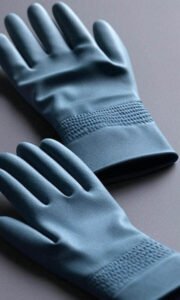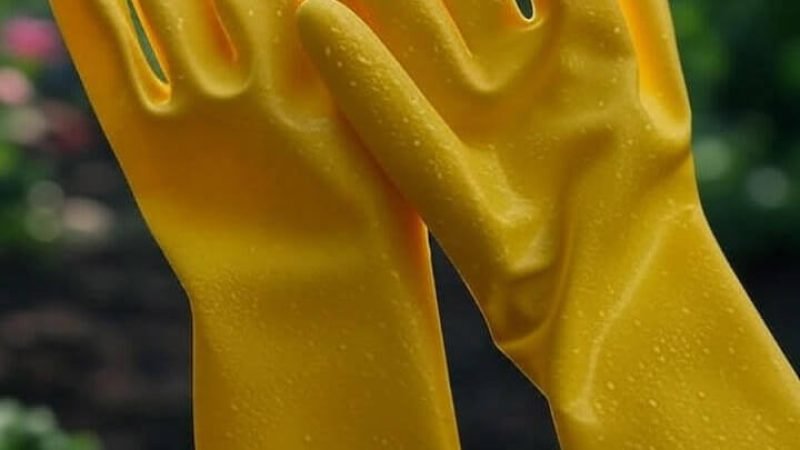What Are Rubberized Gloves Used For? A Comprehensive Guide
Article Outline
Introduction to Rubberized Gloves
Rubberized gloves represent one of the most versatile and essential protective equipment items across numerous industries and applications. These specially designed gloves provide a crucial barrier between human skin and potentially harmful substances, contaminants, or environments. Made from various rubber compounds including natural latex, nitrile, or synthetic rubber materials, these gloves offer flexibility, durability, and protection that make them indispensable in modern society.
The widespread adoption of rubberized gloves stems from their unique properties: they provide excellent tactile sensitivity while maintaining strong barrier protection, resist punctures and tears better than many alternative materials, and can be manufactured to meet specific requirements for different applications. Understanding the various uses of rubberized gloves helps appreciate their critical role in maintaining safety, hygiene, and efficiency across diverse fields.
Medical and Healthcare Applications
The healthcare sector represents the largest and most critical application area for rubberized gloves. In medical environments, these gloves serve as the primary defense against cross-contamination, infection transmission, and exposure to bodily fluids or hazardous medical substances.
Surgical Procedures
During surgical operations, rubberized gloves provide surgeons and medical staff with the dexterity needed for precise procedures while maintaining a sterile barrier. Surgical gloves must meet stringent quality standards, including freedom from holes, consistent thickness, and biocompatibility. These gloves prevent the transmission of pathogens from healthcare workers to patients and vice versa, making them absolutely essential for maintaining sterile surgical environments.
The tactile sensitivity of high-quality rubberized surgical gloves allows surgeons to perform delicate procedures with confidence. Modern surgical gloves often feature textured surfaces for improved grip, especially when handling wet or slippery instruments, and some incorporate antimicrobial properties for additional protection.
Patient Care and Examination
In routine patient care, examination gloves protect healthcare providers during physical examinations, wound care, and when handling medical equipment. These gloves are typically single-use items that prevent cross-contamination between patients and protect healthcare workers from exposure to infectious materials.
Examination gloves are used extensively in emergency rooms, clinics, nursing homes, and other healthcare facilities where direct patient contact occurs. They provide protection during procedures such as taking vital signs, administering medications, changing dressings, and collecting specimens for laboratory analysis.
Laboratory Work
Medical and research laboratories rely heavily on rubberized gloves to protect technicians and researchers from chemical exposure, biological hazards, and radioactive materials. Laboratory gloves must resist degradation from various chemicals while maintaining flexibility for handling delicate equipment and specimens.
In pathology labs, gloves protect workers from exposure to formaldehyde, stains, and potentially infectious tissue samples. Research laboratories working with cell cultures, genetic materials, or hazardous chemicals require gloves that can withstand prolonged exposure to these substances without compromising barrier integrity.

Industrial and Manufacturing Applications
Industrial settings present numerous hazards that make rubberized gloves essential for worker safety and productivity. These environments often involve exposure to chemicals, oils, solvents, and abrasive materials that can cause severe injury or long-term health problems without proper protection.
Chemical Handling
Chemical processing facilities, laboratories, and manufacturing plants use specialized rubberized gloves designed to resist specific chemicals. Different rubber formulations offer varying levels of protection against acids, bases, solvents, and other corrosive substances. Workers handling pesticides, cleaning chemicals, paints, and industrial solvents rely on these gloves to prevent chemical burns and absorption through the skin.
The selection of appropriate chemical-resistant gloves requires understanding the specific chemicals involved, duration of exposure, and required dexterity. Some applications require thick, heavy-duty gloves for maximum protection, while others need thinner gloves that maintain tactile sensitivity for precise work.
Automotive Industry
Automotive technicians and assembly line workers use rubberized gloves to protect against oils, greases, fuels, and cleaning solvents commonly found in automotive environments. These gloves also provide protection from sharp metal edges, hot surfaces, and abrasive materials while allowing the dexterity needed for detailed mechanical work.
In automotive painting and refinishing operations, specialized gloves protect workers from paint chemicals, thinners, and other hazardous substances. The gloves must resist these chemicals while providing the flexibility needed for spray gun operation and surface preparation tasks.
Food Processing
Food processing facilities require gloves that meet strict hygiene standards while protecting workers from cleaning chemicals, sharp tools, and temperature extremes. Food-grade rubberized gloves must be safe for direct food contact and resist oils, fats, and food acids without transferring harmful substances to food products.
These gloves are essential in meat processing, dairy production, and commercial kitchens where workers handle raw foods and cleaning chemicals. They prevent contamination of food products while protecting workers from cuts, chemical exposure, and foodborne pathogens.
Household and Cleaning Uses
Rubberized gloves have found extensive applications in domestic and commercial cleaning operations, providing protection from harsh cleaning chemicals and biological contaminants while improving grip on wet surfaces.
Domestic Cleaning Tasks
Household cleaning gloves protect hands from harsh detergents, bleach, ammonia-based cleaners, and other chemical products commonly used in home maintenance. These gloves prevent skin irritation, chemical burns, and allergic reactions that can result from direct contact with cleaning products.
Beyond chemical protection, household rubberized gloves improve grip when handling wet dishes, cleaning tools, and slippery surfaces. They also protect against cuts from broken glass or sharp objects encountered during cleaning tasks and provide a barrier against bacteria and viruses present in bathroom and kitchen environments.
Gardening and Outdoor Work
Gardening gloves made from rubberized materials protect hands from thorns, splinters, soil-borne pathogens, and pesticides or fertilizers. These gloves often feature textured palms and fingers for improved grip on tools and plants, even when wet from watering or morning dew.
Outdoor maintenance tasks such as gutter cleaning, pressure washing, and landscaping benefit from the chemical resistance and durability of rubberized gloves. They protect against cuts from sharp materials, chemical exposure from cleaning products, and biological hazards present in outdoor environments.
Specialized Applications
Several specialized fields have developed specific applications for rubberized gloves that address unique safety and performance requirements.
Electrical Work
Electricians use specially designed rubberized gloves that provide electrical insulation while maintaining the dexterity needed for detailed electrical work. These gloves must meet strict electrical safety standards and are often tested and certified for specific voltage ratings.
Electrical safety gloves feature multiple layers, including an inner liner for comfort, a rubber insulating layer for electrical protection, and sometimes an outer protective layer for mechanical protection. Regular testing and inspection of these gloves are critical for maintaining their protective properties.
Beauty and Salon Services
Beauty professionals use rubberized gloves when applying hair dyes, chemical treatments, and nail products that can cause skin irritation or allergic reactions. These gloves must be thin enough to allow precise application while providing adequate chemical resistance.
Tattoo artists and body piercing professionals rely on rubberized gloves to maintain sterile conditions and prevent cross-contamination between clients. These applications require gloves that meet medical-grade standards for barrier protection and biocompatibility.
Choosing the Right Rubberized Gloves
Selecting appropriate rubberized gloves requires careful consideration of several factors including the specific hazards present, required dexterity, duration of use, and any allergies or sensitivities. Natural latex gloves offer excellent elasticity and tactile sensitivity but can cause allergic reactions in sensitive individuals. Nitrile gloves provide good chemical resistance and are latex-free, making them suitable for people with latex allergies. Neoprene gloves offer broad chemical resistance and are ideal for applications involving multiple chemical exposures.
Thickness is another critical consideration, with thicker gloves generally providing better protection but reduced dexterity. The length of the glove should also match the application, with longer gloves providing protection for forearms in applications involving deep immersion or splashing hazards.
Conclusion
Rubberized gloves serve essential protective functions across a vast range of applications, from life-saving medical procedures to everyday household cleaning tasks. Their versatility, effectiveness, and relatively low cost make them indispensable tools for maintaining safety, hygiene, and efficiency in modern society.
Understanding the appropriate selection and use of rubberized gloves is crucial for maximizing their protective benefits while ensuring comfort and functionality. As technology continues to advance, we can expect to see further improvements in glove materials, design, and specialized applications that will expand their utility even further.
Whether protecting healthcare workers from infectious diseases, shielding industrial workers from chemical hazards, or helping homeowners safely complete cleaning tasks, rubberized gloves represent a simple yet powerful technology that continues to play a vital role in protecting human health and safety across countless applications.
Looking for High-Quality Glove Manufacturing Equipment?
If you’re in the business of producing rubberized gloves or looking to start glove manufacturing, having the right equipment is crucial for producing high-quality, reliable protective gloves. Our comprehensive Glove Machine Series offers state-of-the-art manufacturing solutions designed to meet the demanding requirements of medical, industrial, and household glove production.
From automated dipping lines to quality control systems, our glove manufacturing equipment ensures consistent production of gloves that meet international safety standards. Discover how our advanced machinery can help you produce the protective gloves that keep workers and consumers safe across all the applications discussed in this guide.
